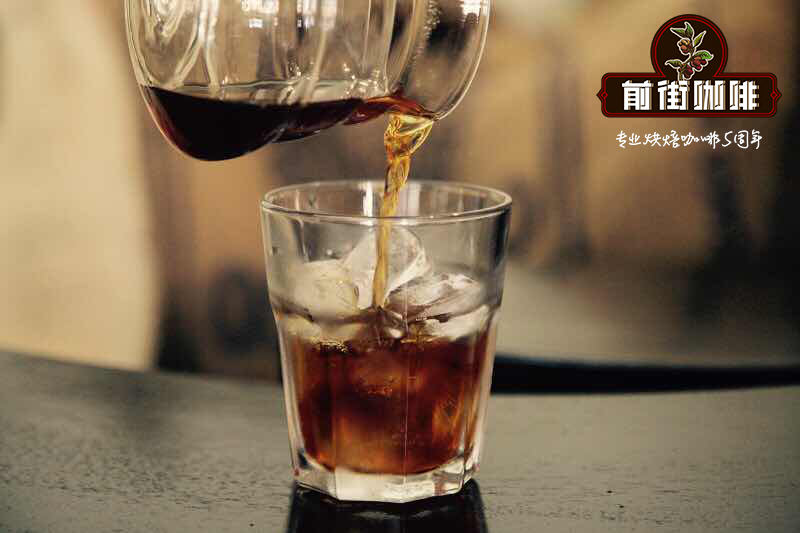Coffee beans have lower caffeine after cold extraction. How do you make cold coffee?

Professional coffee knowledge exchange more coffee bean information please follow the coffee workshop (Wechat official account cafe_style)
Caffeine is a water-soluble substance, usually in the form of non-crystalline water or a crystalline water. Pure caffeine is white powder or white needle-like crystal, odorless, bitter taste.
Mr. Han Huaizong mentioned in his book Coffee Science that the caffeine content of coffee beans grown in Robusta is about 2% of the weight and is about twice that of Arabica.
In terms of R beans, the caffeine content of 100g Luobu beans is 2g (2%). When 0 ℃ and 100ml ice water coexist, the caffeine extracted is relatively low (only 0.6 g can be extracted). However, we have mentioned before that 100g beans will not only use 100ml water (that is, 1:1 ratio extraction), at least 1:10 ratio will be used, even if 100g Luo Bean is used to make cold-extracted coffee with 0 ℃, 1000ml ice water, all caffeine will be precipitated, so the caffeine in cold-extracted coffee will not become less because of low extraction temperature. And the caffeine content here is calculated in terms of raw beans, which have more caffeine than roasted beans, that is, roasted beans will have less caffeine, and the deeper the roast, the less caffeine in the beans.
In general, substances in daily life have three changes: gaseous state, liquid state (molten state) and solid state. The three-state change of water can be observed at one atmospheric pressure, but caffeine is only solid and gaseous, not melted, because caffeine sublimates from powdery or acicular solid to gas at 178℃. Coffee is roasted at temperatures above 190 ℃, so the theory of deeper roasting and less caffeine is based on this.
Friends who play baking beans by themselves will notice that after baking for a period of time, there will be crystals like cotton, yellow or white in the smoke pipe or around the smoke outlet of the bean dryer. caffeine is sublimated from the internal heat of the coffee beans. caffeine crystals condensed again as expected (below the sublimation point).
Important Notice :
前街咖啡 FrontStreet Coffee has moved to new addredd:
FrontStreet Coffee Address: 315,Donghua East Road,GuangZhou
Tel:020 38364473
- Prev

What is a cauliflower latte? Is the latte coffee? How do you make a latte?
Professional coffee knowledge exchange more coffee bean information Please pay attention to the coffee workshop (Wechat official account cafe_style) three meals are always out, so that you do not eat enough vegetables? Recently, a coffee shop in Melbourne, Australia has launched a broccoli coffee latte, which can definitely meet the nutrition you need for the day. In Melbourne, Australia, a coffee shop offers broccoli coffee lattes.
- Next

How to make foam on coffee? How to make coffee foam? What kind of milk is used to make coffee foam?
Professional coffee knowledge exchange More coffee bean information Please pay attention to coffee workshop (Weixin Official Accounts cafe_style) to steam milk foam, will make the milk temperature gradually rise, once the temperature is too high, will make milk smell, or foam appears rough and dry. When using warm milk, not only the temperature will rise rapidly, but also the stirring time cannot be prolonged, so the production
Related
- Beginners will see the "Coffee pull flower" guide!
- What is the difference between ice blog purified milk and ordinary milk coffee?
- Why is the Philippines the largest producer of crops in Liberia?
- For coffee extraction, should the fine powder be retained?
- How does extracted espresso fill pressed powder? How much strength does it take to press the powder?
- How to make jasmine cold extract coffee? Is the jasmine + latte good?
- Will this little toy really make the coffee taste better? How does Lily Drip affect coffee extraction?
- Will the action of slapping the filter cup also affect coffee extraction?
- What's the difference between powder-to-water ratio and powder-to-liquid ratio?
- What is the Ethiopian local species? What does it have to do with Heirloom native species?

